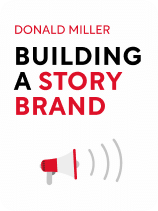

This article is an excerpt from the Shortform book guide to "Building a Storybrand" by Donald Miller. Shortform has the world's best summaries and analyses of books you should be reading.
Like this article? Sign up for a free trial here .
Do you need a storybrand worksheet? Are there storybrand exericses that can help you write your brandscript?
This storybrand worksheet includes exercises about starting your script, determining what the customer wants, and implementing your storybrand. They can help you figure out the best ideas for your brandscript and how you’ll use them across your company.
Check out the storybrand worksheet below.
Storybrand Worksheet
This storybrand worksheet can help you determine your brandscript, and establish important elements like your hero, their aspirations, and more. Be sure to go through all the exercises on the storybrand worksheet to have a more thorough understanding of your brand.
Writing Your Brandscript
To write your BrandScript:
- Create an online StoryBrand BrandScript (requires you to create an account) or create your own on a blank sheet of paper. To create your own, first, divide the sheet into eight sections. You’ll use seven of these for the SB7 Framework elements and the last for an exercise in Chapter 9. Then, label the sections as follows:
| 1. HeroThe hero wants: ____ ↓ | 3. Guide Evidence of empathy: ____ Evidence of competence: ____ ↓ | 5. Call to ActionDirect: ____ Transitional: ____ ↓ | 7. Positive stakesTop positive stakes: ____ |
| 2. ProblemsVillains:____External problems: ____Internal problems: ____Philosophical problems: ____↗ | 4. PlanProcess plan: ____ Agreement plan: ____↗ | 6. Negative stakesTop three negative stakes: ____ ↗ | Aspirational identityFrom: ____ To: ____ |
- Brainstorm what your brand offers and how you can translate this into customer desires.
- Write the top wants on your script or sheet of paper.
The Happy Ending Must Be Specific
The most successful brands show customers exactly how a product will change their lives for the better. Many brands are too vague, and it’s hard to get excited about vagueness. (Shortform example: If you sell gym equipment, promising a “you’ll be happy with your purchase” isn’t as compelling as “you will be as strong as an Olympian.”)
To come up with a specific positive outcome, consider how your product or service will solve all three types of problems from Chapter 3: external (what their life will look like), internal (how they will feel once the problem is solved), and philosophical (why the world is a better place now that the problem is solved).
Alternatively, marketer Ryan Deiss created a before-and-after grid exercise that will help you determine how your product will change your customer’s lives:
| Before a customer buys your product | After a customer buys your product | |
| What does the customer possess? | ||
| How does the customer feel? | ||
| What is an average day like for a customer? | ||
| What is the customer’s status? |
Exercise: Who Is Your Aspirational Identity?
An aspirational identity is the type of person you would become if you owned a certain product. Use this section on the storybrand worksheet to think about your customer’s aspirations.
How would you want your friends to describe you? Why?
What’s one product that’s owned by the type of person you described above?
What specific brands do you know of that make this product?
Probably, the brands that come to mind are employing aspirational identities. How do they display the identities? (For example, do their taglines and slogan describe the identity, or do their ads show photos of certain types of people?)
Exercise: Implement Your Story
There are five ways to implement your story into your marketing materials.
Brainstorm some possible loglines for your company. Remember that loglines should include the hero (customer), problem, plan, and positive stakes.
What would be an effective lead generator for your company? For example, you might offer a free trial or a downloadable guide.
What valuable information might you share with potential customers in a nurturing campaign? What format (email, video, and so on) would you use?
Which of your satisfied customers might you approach about writing you a testimonial?
To encourage referrals, what could you offer customers who send their friends your way? For example, you might offer existing customers a discount on their next purchase or a sample they can share with their friends.
You can use this storybrand worksheet to perfect your storybrand and branscript at any time, or when you find that your brand needs some revision.

———End of Preview———
Like what you just read? Read the rest of the world's best book summary and analysis of Donald Miller's "Building a Storybrand" at Shortform .
Here's what you'll find in our full Building a Storybrand summary :
- How storytelling enhances brand marketing
- Why you should make the consumer the hero of your brand's story
- The 7 elements that make marketing work






